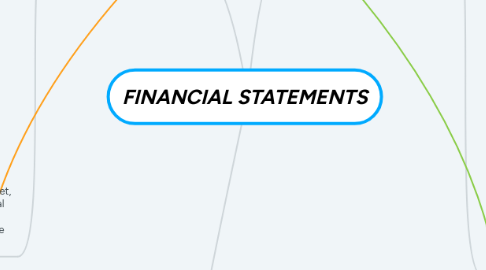
1. Balance Sheet
1.1. This sheet uses the accounting equation (Assets = Liabilities + Owner's Equity) to show a company's financial position at a specific point in time
1.2. It is a snapshot of a company's finances (split into what it has and what it owes). It is often used to calculate various financial ratios
1.3. The sheet deals with three financial details: assets, liabilities, and equity
1.3.1. ASSETS: an item of value that is owned by a company, used to generate revenue. It is split into two types: short and long-term assets. Short-term assets are used with a 12-month period, and may be listed on a Balance Sheet as cash and cash equivalents, accounts receivable, and Inventory. Long-term assets are used for more than a year, and may be listed as machinery, goodwill, and land
1.3.1.1. Current ratio = Current assets/current liabilities
1.3.1.2. Net working capital = Current assets - current liabilities
1.3.2. LIABILITIES: also known as debt, it is money owned by a company to others, such as banks, suppliers, and employees in the form of wages. It is also divided into short-term and long-term. Short-term liabilities include interest payable, wages payable, and accounts payable. Long-term liabilities include pension fund liability, long-term debt, and deferred tax liability (taxes that will not be payed for another year)
1.3.2.1. Debt to asset ratio = Total liabilities/total assets
1.3.3. EQUITY: also known as owner's equity, shareholders' equity, or capital. It is sometimes referred to as "net assets" because it is equal to assets - liabilities. It is a company's money attributable to its owners or shareholders. It can be split into retained earnings, dividends (the remainder), treasury stock, and common and preferred stock
1.3.3.1. Debt to equity ratio = liabilities : equity (liabilities/equity)
1.4. Assets are listed first on the Balance Sheet, then liabilities, and finally equity. The total amount of each financial is listed as well, though there is often a bottom line where liabilities and equity are added together
2. Cash Flow Statement
2.1. This statement shows the sources and uses of the company's cash over a period of time. It shows the cash and cash equivalents entering and leaving a company
2.2. Managing the Cash Flow Statement is important as it displays the financial stability of a company. So long as more money is coming into a company than going out, the company will be fine
2.3. It explains how well the company generates cash and uses it for debt and expenses. It allows investors to understand how well a company's operations are, where it gets its money from, and how that money is being spent. It provides insight into the financial stability of a company
2.4. The main elements to a Cash Flow Statement are cash from operating activities, cash from investing activities, and cash from financing activities
2.4.1. CASH FROM OPERATING ACTIVITIES: this details how much cash comes from a company's goods. This can include interest payments, income tax payments, and salary payments to employees
2.4.1.1. Operating cash flow ratio = Cash from operating activities/revenue
2.4.2. CASH FROM INVESTING ACTIVITIES: this details any cash created from a company's investments. This can include purchasing or selling an asset, loans received from customers, or any payments related to a merger
2.4.3. CASH FROM FINANCING ACTIVITIES: this details the cash that comes from investors or banks, and how shareholders use the cash paid to them. This includes payment of dividends and for stock repurchases, and repaying debt loans
2.5. The cash from operating activities section is usually at the top of the Cash Flow Statement. The investing and financing activities sections come next
3. Income Statement
3.1. This statement shows the revenue earned, the expenses paid, and the profit generated over a period of time
3.2. It provides valuable insight into a company's operations, how efficient its management is, and how well it performs compared to other companies in the sector
3.3. It deals with 4 main financial details: revenue, cost of goods sold, expenses, and net profit/income
3.3.1. REVENUE: the income a company receives for the goods it sold, from normal business operations and other activities. It may also be listed as "Sales" on the Income Statement. Revenue = Sales price * number of goods sold
3.3.2. COST OF GOODS SOLD: also known as COGS. It is the costs a company acquires in order to sell their goods. It includes the direct related costs attributed to the production of their goods. It is sometimes referred to as "cost of sales" Gross profit = Revenue - COGS
3.3.3. EXPENSES: the money paid in order to generate sales. It is the cost of operations that a company incurs in order to sell their goods.
3.3.4. NET PROFIT: sometimes seen as "Net income," and also known as net earnings. It is the bottom line of the Income Statement, and displays the company's profit. It provides insight into a company's profitability Net profit = Revenue - COGS - expenses Net profit = Gross profit - expenses
3.3.4.1. Return on sales = Net profit/revenue
